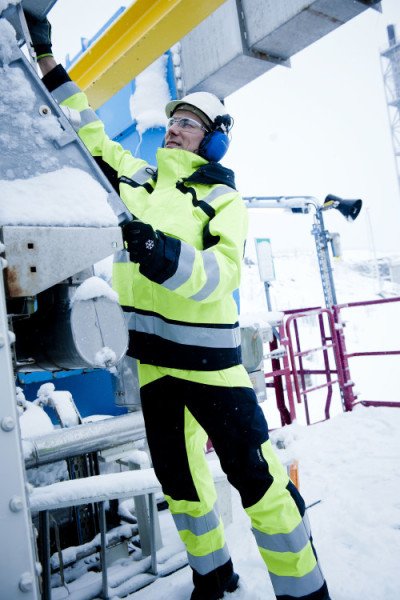New workwear doubles efficiency in Arctic conditions

The oil and gas industry is stepping up its activitiy in the Arctic Circle. However, extreme weather conditions of the Barents Sea, north of Norway, represents a big challenge, as the combination of freezing temperatures and heavy wings make outdoor operations much tougher than in the North Sea.
To help increase the amount of time workers can spend outdoors, Wenaas Workwear has collaborated with SINTEF, a leading Norwegian research institution to launch a new generation of workwear. This new workwear is exepcted to increase the recommended amount of time outdoors by 100%.
Wenaas Workwear, the traditional Norwegian manufacturer, has been developing workwear for the oil and gas industry since activity began in the North Sea. Last year it initiated a scientific project with operators Statoil and Eni Norge, being granted financial support from The Research Council of Norway.
Baard Tosterud, marketing director of Wenaas Workwear, explains: “Today, oil and gas workers in the Barents Sea are wearing traditional cotton coveralls which are unsuited to temperatures below 0 degrees Celsius.
“The strict security requirements for offshore clothing limit options in this respect; the outer layer must be flame retardant and antistatic, as well as adaptable to hearing protection and communication devices. In the Arctic Circle, the extreme weather comes in as an extra challenge.”
In order to create the ground-breaking workwear range, researchers at SINTEF’s headquarters in Trondheim have carefully monitored a variety of simulated offshore tasks in a laboratory where temperatures are set to 25 degrees below zero – the conditions awaiting oilrig workers in the north-eastern part of the Barents Sea.
Ole-Petter Næsgaard, industrial designer and project manager at SINTEF said: “Among the major challenges within this project were several conflicting demands; of course you have the extreme temperature, winds and density of the Arctic to consider, but also the strict security requirements combined with multiple user tasks.
“The new clothing range has received excellent feedback from offshore workers in situ. It offers the correct level of thermal protection, good dexterity and provides solutions for easy individual adjustments. Laboratory results indicate it allows for double the currently-recommended outdoors time in the Arctic.”
Baard concludes: “This new generation of workwear signals a shift in terms of efficiency in arctic offshore operations, and Wenaas Workwear continues to build upon its heritage of innovative, top-to-toe safety solutions.”
New workwear doubles efficiency in Arctic conditions
The oil and gas industry is stepping up its activitiy in the Arctic Circle. However, extreme weather conditions of
Safety & Health Practitioner
SHP - Health and Safety News, Legislation, PPE, CPD and Resources Related Topics
Engel workwear’s sustainable & stretch-comfort collections help save the environment
Rana Plaza collapse: Nine years on, what does the future of workwear production look like?
Funding given to support research and development of innovative recycling solution trial

